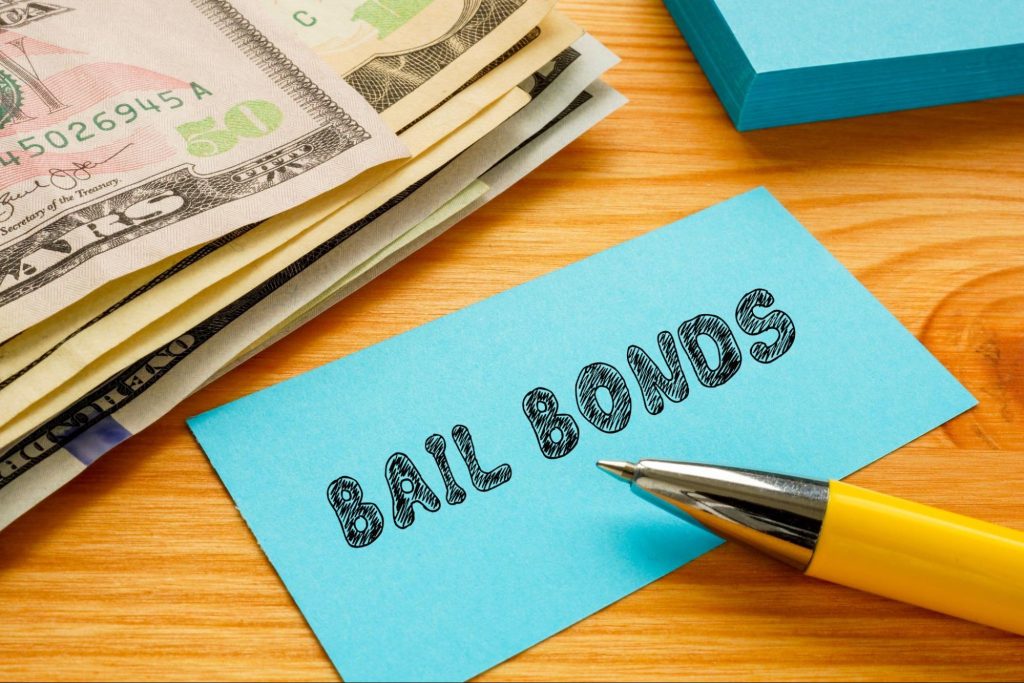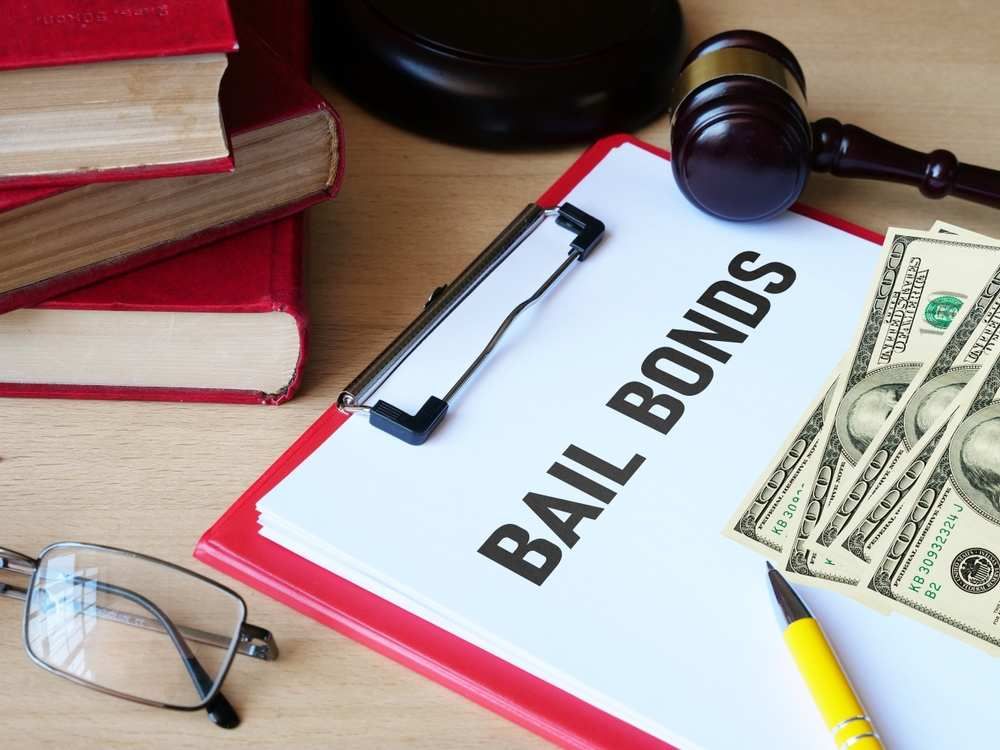Comprehending the Essentials of Bail Bonds: What You Required to Know
Navigating the intricacies of bail bonds is an important aspect of the lawful system that can substantially affect the accused's journey through court process. A bail bond acts as a monetary assurance for the court, facilitating momentary launch from protection while waiting for trial. The details of how bail bonds run, the different types offered, and the vital factors to consider in selecting a trustworthy bail bondsman can be intimidating. Understanding these components is crucial, as the repercussions of errors may lead to unexpected complications that expand much beyond the court room. What are the fundamental facets that one must understand to properly steer this procedure?
What Is Bail?
Bail is a monetary setup that permits an individual implicated of a criminal activity to be released from guardianship while waiting for test. The main objective of bail is to guarantee that the defendant appears for future court process (Bail Bondsman). Normally established by a court, the bail quantity varies depending on the nature of the criminal offense, the defendant's criminal background, flight threat, and various other pertinent factors
When bail is approved, the charged or a rep must pay a specified amount, which may remain in cash or with a bail bond. In many cases, bail can be refuted entirely, particularly for serious offenses or if the suspect presents a substantial threat to public security. The principle of bail is rooted in the anticipation of virtue, reinforcing the concept that people should not be punished prior to a conviction.

Understanding Bail Bonds
A bail bond is a financial instrument that assists in the launch of an implicated person from wardship, acting as a guarantee for their look at future court days. This setup permits offenders to preserve their flexibility while awaiting trial, reducing the burdens associated with imprisonment. The bail bond procedure commonly entails a third-party business, called a bail bondsman, who provides the needed funds to the court in behalf of the implicated.
Bail bonds come in various kinds, consisting of surety bonds, residential property bonds, and money bonds, each with distinct requirements and effects. Guaranty bonds, the most common type, call for an exceptional repayment, normally a percent of the overall bail amount, which is non-refundable. In contrast, a home bond involves utilizing realty as collateral, while cash money bonds require the full bail total up to be paid upfront.
Recognizing the nuances of bail bonds is vital for accuseds and their families. It is important to comprehend the potential monetary implications, consisting of fees and commitments to the bail bondsmansman, along with the legal responsibilities connected to ensuring court looks. Knowledge of these aspects help in making notified choices during a difficult time.
Just How Bail Bonds Work
The process of safeguarding a bail bond normally includes several vital steps that make sure the accused can restore their freedom while waiting for trial. Originally, the individual or their representative calls a bail bondsman, who examines the instance and the linked risks. The bail bondsman will certainly call for information about the implicated, including the charges, the bail amount set by the court, and any appropriate personal details.
When the bondsman consents to offer the bond, the implicated or their agent needs to pay a non-refundable charge, normally a portion of the overall bail amount. This fee compensates the bondsman for tackling the economic danger of making certain the charged shows up in court. In many cases, collateral may also be called for, such as home or valuable possessions, which functions as safety for the bond.
After any kind of collateral and the fee are arranged, the bail bondsman sends the necessary documentation to the court. Upon authorization, the bail is posted, and the accused is launched from guardianship. It is vital for the implicated to follow sites all court days and conditions, as failing to do so can bring about the forfeit of the bond and potential lawful repercussions.
Kinds Of Bail Bonds
Various sorts of bail bonds are readily available to fit various conditions and demands. One of the most typical type is the guaranty bond, where a bondsman warranties payment of the complete bail quantity to the court in exchange for a non-refundable charge, generally around 10% of the bail. This plan allows accuseds to secure their release without paying the whole bail upfront.
One more kind is the money bond, which calls for a co-signer or the offender to pay the full bail quantity in money straight to the court - Los Angeles Bail Bondsman. This choice is typically preferred for reduced bail amounts, as it makes sure the cash is returned upon the accused's look at all court procedures
Residential property bonds entail making use of property as security. In this case, the court puts a lien on the property, which can be forfeited if the accused falls short to appear.
Finally, government bail bonds are especially developed for federal situations, usually involving higher amounts and extra intricacies. Recognizing these various bail bond types is important for accuseds and their family members in making educated choices during a challenging time.
Choosing a Bondsman
When choosing a bondsman, it is necessary to consider a number of crucial aspects that can influence the total experience and end result. Review the bail bondsman's credibility by researching on-line evaluations and getting suggestions from trusted sources. A reliable bail bondsmansman will have a background of professionalism and successful instances.

It is likewise vital to recognize the cost framework. A lot of bail bondsmensman bill a non-refundable fee, normally around 10% of the bail amount. Be wary of any kind of surprise costs or uncommon More Info payment practices. Openness in rates is a trademark of a trustworthy bondsman.
Conclusion
In summary, understanding the basics of bail bonds is crucial for people involved in the legal system. Bail his comment is here offers as a financial guarantee of court appearance, while various types of bail bonds provide to different circumstances. Recognizing the functional systems of bail bonds and picking a reputable bail bondsmansman can significantly affect the overall experience. A complete examination of offered alternatives guarantees educated decision-making, eventually facilitating a smoother navigating through the complexities of the lawful process.
The details of how bail bonds run, the various types readily available, and the vital factors to consider in selecting a respectable bail bondsman can be discouraging. The bail bond process usually entails a third-party company, understood as a bond bondsman, that offers the needed funds to the court on part of the charged.
The most common type is the surety bond, where a bond bondsman assurances settlement of the complete bail amount to the court in exchange for a non-refundable charge, commonly around 10% of the bail. Bail serves as a financial assurance of court appearance, while numerous kinds of bail bonds cater to various conditions. Understanding the operational systems of bail bonds and picking a trusted bail bondsman can significantly influence the general experience.